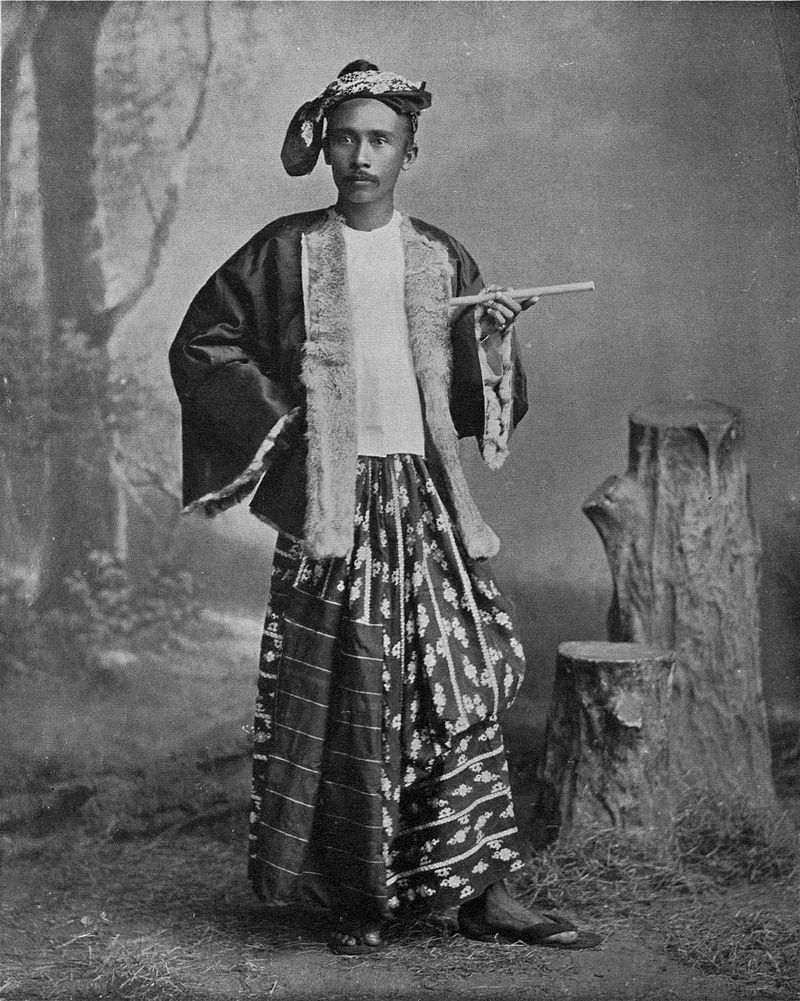Culture
Turbans and Headgear
- Details
- Last Updated: 13 November 2018
- Hits: 2841
 Turbans and Headgear
Turbans and Headgear
A man wearing a gaung baung typical of the style in the late 1800s.
Photo Credit - www.wikipedia.org
Back in the colonial days. many Myanmars had pictures that reminded us of the days when Myanmar was a free sovereign state. like portraits of King Mindon. King Thibaw. and his queen. the last to rule Myanmar. and also pictures of General Bandoola who lost his life defending the country against the British. We. as growing children. learned our history even before we learned to read. from those silent memories.
Among the memorabilia. there was also a picture of three strange looking gentlemen in European dress suits. wearing silk Myanmar gaungbaungs or turbans. They were Prince Myingun and his sons; the prince. a son of King Mindon. had to flee the country and seek asylum with the French. after an unsuccessful attempt to seize the throne.
It is remarkable that the Myanmar prince retained his headgear even though he had to don the European style dress. Gaungbaung. as the silk headgear is called. is still worn on formal occasions. but bad to say. it is only a parody of what it used to be.
Gaungbaungs today are mass produced. which is what should never be; because this headgear is individualistic in style. each man choosing his own. not only in size or shape or model. but also in colour and pattern. Today. they are produced in a variety of colours. but only plain. not patterned. The shape or model is stereotyped.
People say that it is so convenient. not involving all the trouble of making it yourself; one just puts it on like a hat. Well. that is the whole trouble. one puts it on like a hat. A Myanmar gaungbaung is never meant to be put on like a hat; it must be modelled by one's hand to suit one's own taste.
A Myanmar man of yesterday would not go out without his gaungbaung. which was part of his personality. In any gathering. one saw Myanmar men from twenties up wearing gaungbaungs of various colours. patterns and shapes. In those days there were still men who wore their long hair done into topknots.
Some men left the topknot. sleek and shining. uncovered; to make the gaungbaung they folded the silk piece diagonal wise into a band of three or four inches wide. then they wound the band round the head. covering half of the forehead and tucked the end on one side leaving a triangular edge to hang over the shoulder. The length of the triangular end varied from a little "rabbit's ear" to something that nearly reached the shoulder.
Some men covered up the topknot and swathed the silk piece round the head to achieve something haphazard and yet so full of dignity. with the inevitable triangular edge on one side either short or long. In those days no two gaungbaungs were made alike. each was a work of art. created by the wearer to suit his own personality.
Not only plain coloured pieces were used for making gaungbaung. but also flowered patterns. polka dots and scrollwork motifs. and each gaungbaung is done in a distinctive style. Many well-known personalities were known by the style of their gaungbaungs. Dr. Ba Maw a veteran politician. wore his. lopsided. covering half of his forehead and this feature was the delight of the caricaturists of the day.
There must be something in the Myanmar character that does not like uniformity - in dress particularly. Take agathering of men dressed in western style; they are often compared to a flock of penguins in their shirts and tails. Myanmar men even today. with or without gaungbaung. still express themselves in their choice of longyis(sarongs). I wish they revived the old art of self-made gaungbaungs.
In the days of the Myanmar kings. silk pieces from abroad (probably India) found their way through Pathein. a seaport town of Myanmar. So the pieces were called Pathein scarves. Pathein scarves often feature in love songs. The princess sat by the window waiting for her lover to come with his "Pathein silk turban" aloft.
The Myanmar gaungbaung is not merely for utility. it is for ornament. prestige and most important of all. for the upholding of men's dignity and mystique.





